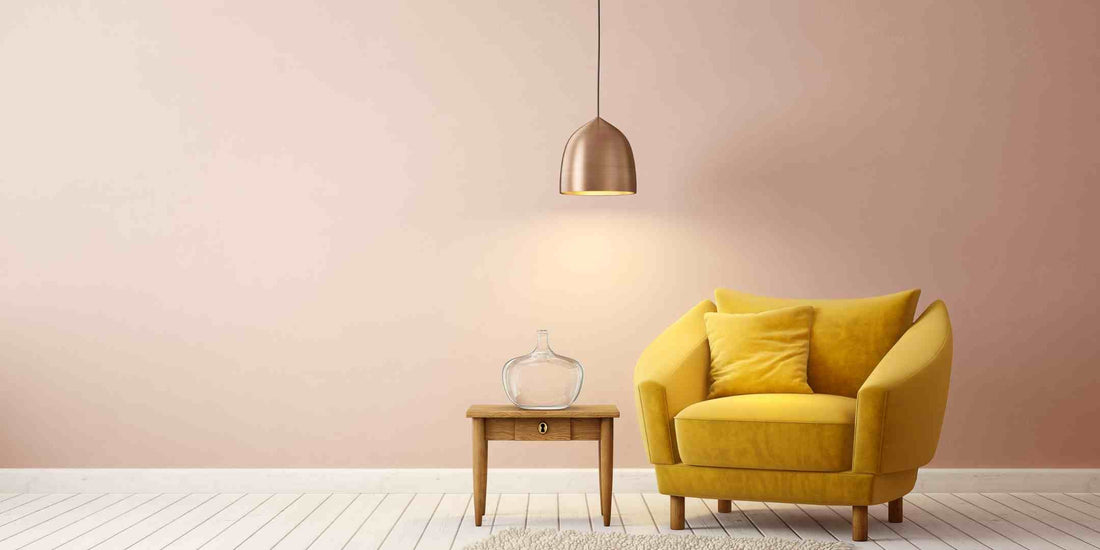
Budget-Friendly Ways to Update Your Lighting
Share
Not everyone has the budget for designer chandeliers or smart-home lighting systems. The good news? You don’t need to spend a fortune to make your home shine.
This is where home lighting design ideas on a low budget come in. And when we say budget-friendly, we’re not talking about settling for the dull, outdated fluorescent tube lights you grew up with. Nope. We’re diving into clever, stylish, and practical simple home lighting design ideas that low-budget homeowners, contractors, and DIYers can pull off right now.
So, whether you’re trying to cozy up your living room, make your dining space feel Instagram-worthy, or simply brighten up your kid’s study nook, you’ll find plenty of ideas here. The best part? Most of them cost less than a dinner date.
Why Lighting Matters Even on a Tight Budget

Lighting sets the mood, dictates how colors appear, and even changes how big or small a space looks. A well-lit kitchen feels cleaner. A dim, warm-toned bedroom feels more restful. And a bright workspace? It makes you want actually to sit down and get things done.
Experts agree: lighting is one of the most cost-effective design tools. Unlike renovating your floors or repainting your walls, you can swap out a lamp, add LED strips, or move a fixture, and the vibe changes instantly. And the best part is, you can do it all without maxing out your budget.
Budget-Friendly Lighting Updates That Actually Work
Let’s break down the most practical home lighting design ideas for a low budget.
1. Switch to LED Bulbs For An Instant Glow-Up
LED bulbs are energy-efficient, long-lasting, and available in all sorts of tones—from warm candlelight vibes to crisp daylight. Yes, they cost a bit more upfront, but they save you money in the long run (and your electric bill will thank you).
Pro tip: Mix warm (2700K) and neutral (4000K) tones across your home.
2. Layered Lighting on a Budget
The holy grail of lighting design is layering: ambient (general light), task (focused light), and accent (decorative or mood light). You just need to be creative to hit your budget.
- Ambient → replace a harsh ceiling bulb with a stylish paper lantern (cheap and chic).
- Task → clip-on lamps for reading or work
- Accent → string lights, candles, or even a DIY spotlight highlighting artwork and featured decor.
3. DIY Lampshades & Other Lighting Fixtures If You Can
Who says you need designer lamps? A woven basket can become a pendant shade. A large mason jar? Perfect as a table lamp base. Even fabric remnants stretched over a wire frame can turn into a colorful, custom shade. Pinterest is full of these hacks. Just be creative.
4. Repurpose What You Already Own
That old brass lamp in your mom’s storage? Spray-paint it matte black and it’ll look like something out of a high-end catalog. Outdated chandelier? Swap the bulbs for Edison-style filaments, and you’ve got instant vintage charm.
5. String Lights & Fairy Lights (Grown-Up Version)
No, not the tacky dorm-room fairy lights. Instead, think soft string lights wrapped around a window frame, tucked inside a clear vase, or draped above a headboard. They create ambiance without looking juvenile—plus they’re dirt cheap.
6. Smart Plugs & Dimmers
You don’t need a complete smart-home system to get mood lighting. Invest in affordable dimmer switches and smart plugs.
7. Thrift Finds
Thrift shops and Facebook Marketplace are goldmines for affordable fixtures. You can do a quick polish, new wiring, or a coat of spray paint to turn your thrift finds into a statement piece. Interior designers swear by this trick, so why pay full price when someone else already did?
8. Accent with Spotlights & Clip Lamps
Small clip-on spotlights are great for highlighting bookshelves, artwork, or even plants. They add drama and sophistication for a fraction of the cost of built-in recessed lighting. Designer Tricks That Cost Little (But Look Luxe)
Even on a budget, you can fake the “designer look” with a few tricks:
- Mix Warm & Cool Lights: Too much warm light can feel dingy; too much cool light feels sterile. Balance both for a natural vibe.
- Play with Height: Hang pendants lower over dining tables or cluster smaller lights at different levels for drama.
- Metallic Finishes: Swap lamp bases or shades for metallic tones (brass, matte black, brushed nickel). They scream “expensive” without actually being expensive.
- Reflective Surfaces: Place lamps near mirrors or glossy finishes to double the effect.
What To Avoid?
Going budget-friendly with your lighting doesn’t mean you should cut corners everywhere. A few common missteps can make your space feel less cozy and even unsafe:
- Fairy light overload. A strand or two can be okay, but draping them on every wall feels more like a festival booth than a home. Keep it subtle so it feels intentional.
- Forgetting about task lighting. If you’re squinting while chopping vegetables or reading, the design has failed. Always air pretty with practical.
- Buying the cheapest option without checking its safety. A bargain isn’t really a bargain if the wiring is questionable. Stick to certified fixtures. You’ll thank yourself later.
- Relying on a single overhead only. One bright bulb in the middle of the ceiling tends to wash everything out. You have to mix in table lamps, floor lamps, or wall sconces to bring back warmth and dimension.
Updating your home’s lighting doesn’t have to drain your wallet. With a few clever swaps, a touch of DIY, and some intentional choices, you can transform your space into something warm, stylish, and functional. The beauty of home lighting design ideas, low budget, is that they prove good design isn’t about money—it’s about creativity.
So go ahead, swap that old bulb, add a thrifted lamp, or try one of these simple home lighting design ideas on a low budget this weekend. Trust me, once you see the glow-up, you’ll wonder why you didn’t do it sooner.
